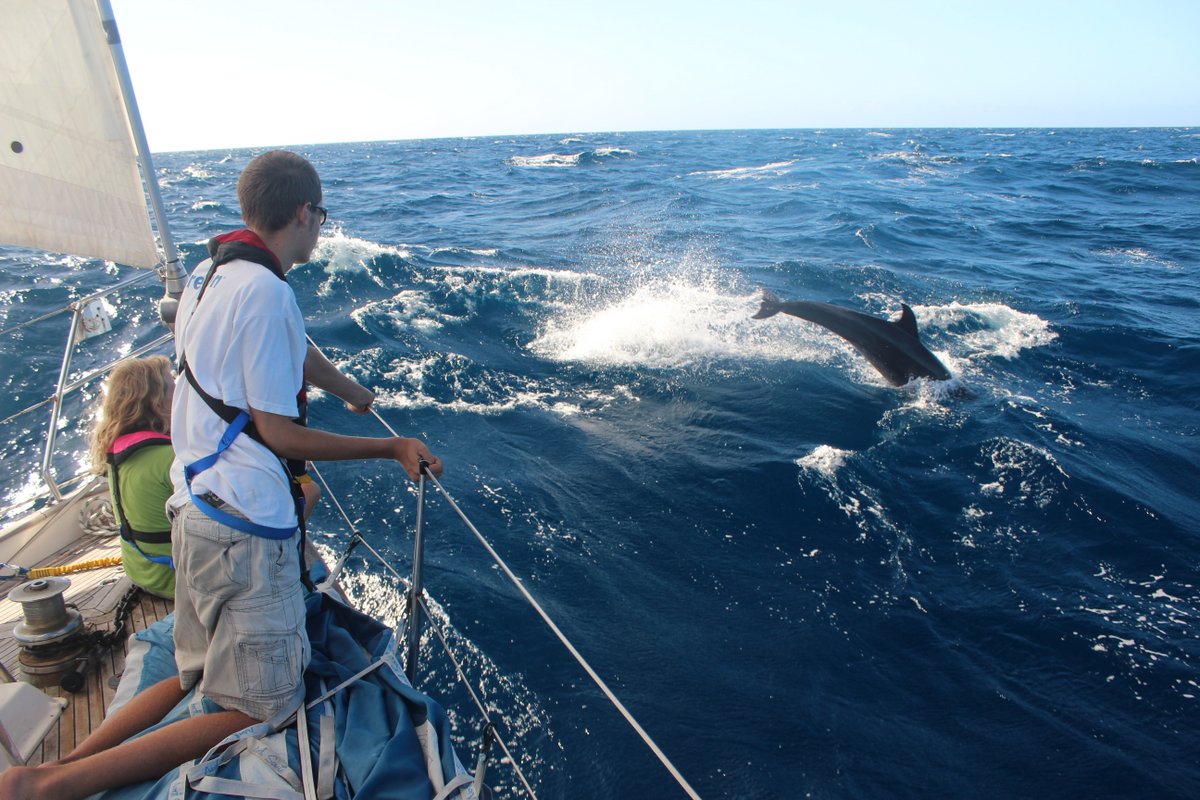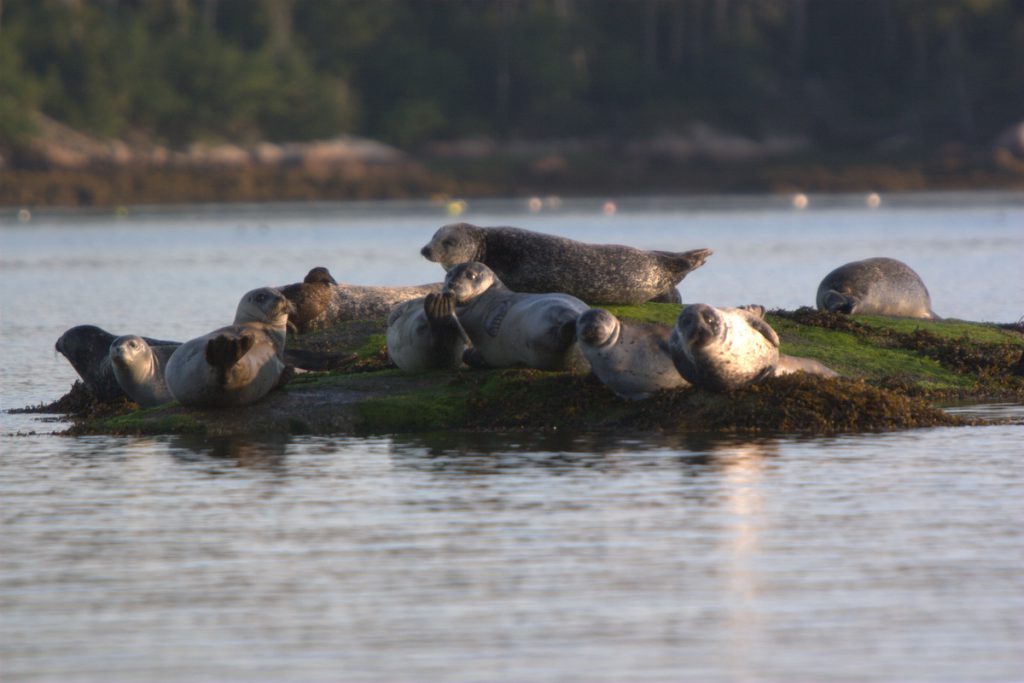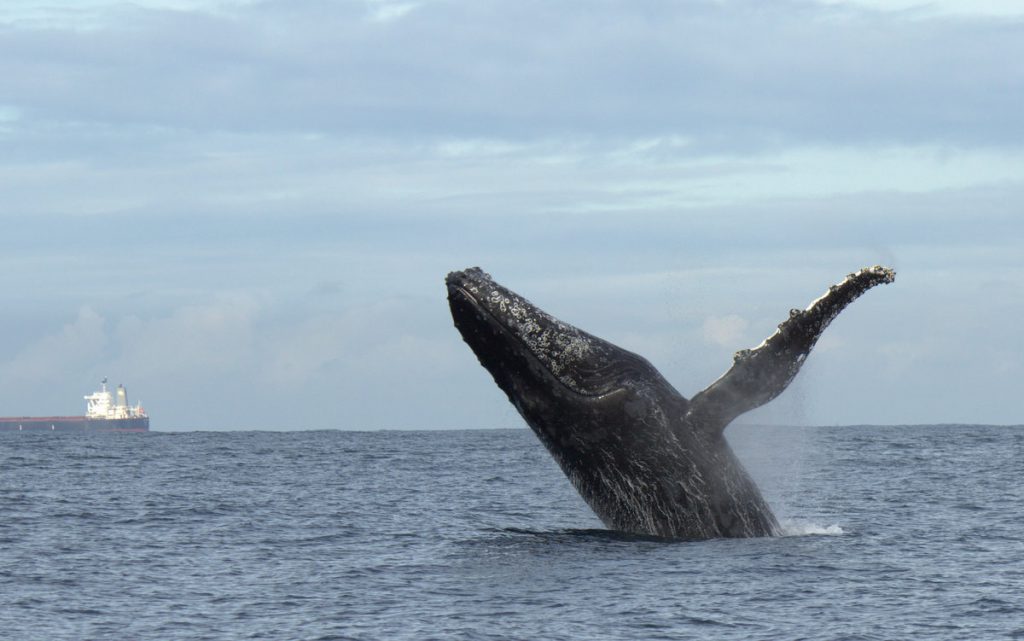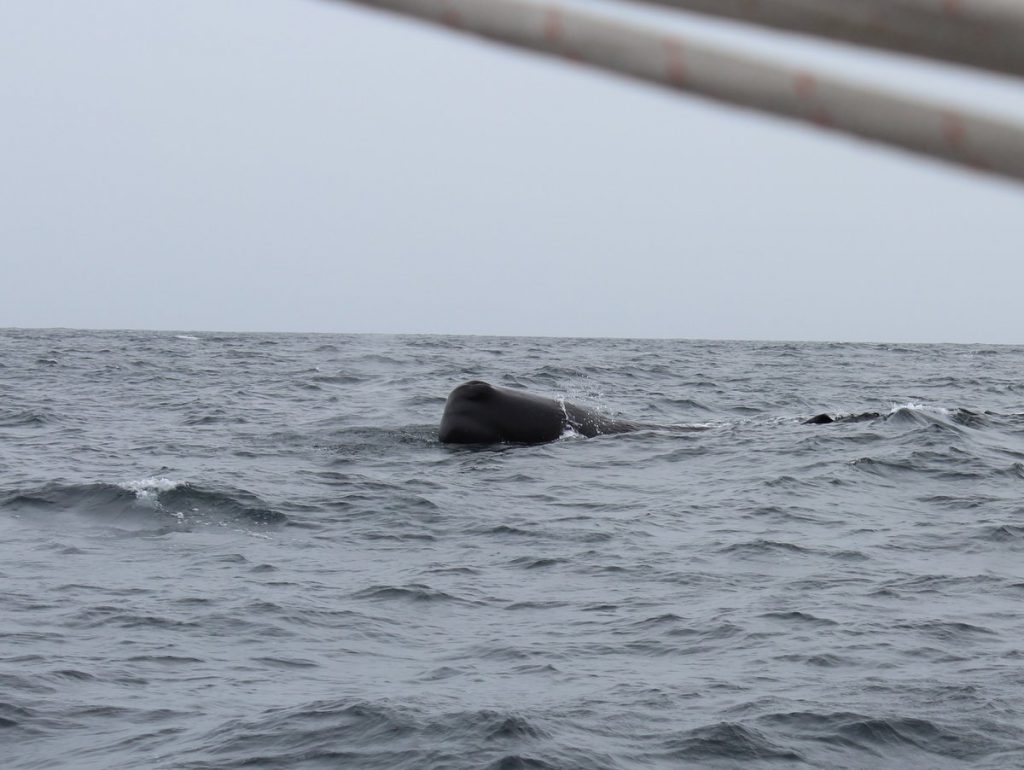Dolphins and Whales Make Everything Better
September 9th, 2023 by team

by B.J. Porter (Contributing Editor)
There’s not much more exciting than seeing some big marine life when you’re out on your boat. Seeing dolphins playfully swimming in your boat’s wake or a majestic whale breaching can make your day. As we used to say, “there’s never a bad day with dolphins.”
Although it’s exciting, there might be rules on how to handle the boat around marine mammals or other activities. And there are definitely some things you should and should not do when near big wildlife on your boat. You don’t want to ruin the experience for anything.
Best Practices

Except for a few miscreant orcas wreaking havoc with sailboats off the coast of Europe, most encounters with marine animals are peaceful and not especially dangerous. Or more accurately, not especially dangerous for you or your boat, unless you have a direct collision. And a collision is a risk.
But the safety and comfort of the animals is also a concern, and you don’t want to stress or harm them trying to enjoy your own encounter.
NOAA and the U.S. Government publish detailed guidelines on what to do and not do, so we won’t repeat them all here. But we’ll hit the highlights that you should know.
Basic distances

If you don’t know the rules, stay back. Stay at least 100 yards from large whales and orcas, and 50 yards from dolphins, porpoises, turtles, sea lions, and other smaller creatures. And stay 500 yards from the critically endangered Northern right whale.
Sometimes you can’t control this. We’ve had orca whales swim right under our stern, seals pop up ten feet from the boat, and dolphins splashing off the bow close enough to get us wet. But the difference is in all cases they came to us. Many marine mammals are curious and even playful, so approaches aren’t uncommon.
The skipper of the boat can’t control where the wildlife goes or how close it comes to you. But you can and should keep your distance and stay well clear when they’re off minding their own business.
Good behaviors

A few things you should always do around marine mammals and turtles include:
- Always slow the boat down and operate at low/no wake speeds.
- If other boats are near the animals, do not approach.
- Do not cut across the path or in front of moving animals.
- Do not pursue or chase the creatures.
- Do not approach mothers/family groups with young.
- Do not get between mothers and young.
- Don’t watch them for more than half an hour; your presence may be stressful without a break.
- If animals act aggressive or stressed, back off.
- Never attempt to feed or attract sea life.
- Don’t get in the water with them or try to touch.
- Report any entanglements or injuries you see.
Your goal is to enjoy the wildlife viewing without upsetting the animals you see. If they’re comfortable, they may come closer, but never force it.
Know the Law
NOAA says it clearly:
The public is prohibited from harassing, harming, pursuing, wounding, killing, capturing, or collecting marine species protected by the Endangered Species Act and Marine Mammal Protection Act. NOAA urges members of the public to observe marine animals from a safe and respectful distance, and do not approach or touch them.
Many of the most popularly viewed animals in U.S. coastal waters are protected by the Endangered Species Act. Whales, dolphins, porpoises, seals, and sea lions are also protected by the Marine Mammal Protection Act. These laws help protect marine mammals and sea turtles from harm, including having their natural behaviors interrupted by human actions.
Before spending time on or near the ocean, know the guidelines and regulations for viewing these marine protected species in their habitats. Viewing guidelines and laws vary by region, state, and species. Please be familiar with the applicable rules before you visit our coastal waters—see the More Information box.
Florida has very aggressive laws protecting manatees from harassment, and the rules for right whales on the Stellwagen Bank off Cape Cod differ from other whale species.
Harassing, or worse, harming marine mammals can cause criminal or stiff civil penalties in many places, so be careful and considerate. And check the rules for where you’re boating before you head out to where
Be Ready

Most wildlife encounters are fleeting, and you may miss them if you aren’t ready. So if you think there’s a chance of seeing something cool, be ready and you’ll have the best experiences.
- Keep binoculars and cameras handy. You don’t want to miss the whole encounter while digging your camera out of a backpack down below!
- If you have an SLR camera, bring a telephoto.
- Get a circular polarizer for your lenses and keep it on. You’ll get much better pictures, especially on sunny days.
- If you move forward to view wildlife on the bow, where a PFD and tether yourself to the boat. Especially if you’re any distance offshore.
And remember, someone needs to stay near the helm!


September 16, 2023 at 2:32 am, Erin C said:
Thank you so much for sharing this important information!!!! As noted, some marine mammals in places around the world have additional guidelines- always check online to see the rules for wherever you’re boating!! You can go to BeWhaleWise.org to learn more 🙂 sincerely, a whale biologist!
September 24, 2023 at 7:58 pm, B.J. Porter said:
That’s a great web site.
September 16, 2023 at 12:50 pm, Dave said:
In the San Juan Islands of Washington State I’ve watched multiple whale “watching” tour boats from 30 to 100 ft long pursue Orcas while I kept my distance. I know becase they matched the Orca’s course changes and speed to keep as close as they could. At times less than the 100 yards. while the regs. here instruct boaters to not approach to less than 800 feet. Obviously, there isn’t the kind of adherance to, or enforcement enough to deter the tour boats.
September 18, 2023 at 2:43 pm, Dennis said:
Can I have permission to reprint in our US Coast Guard Auxillary newsletter?
September 24, 2023 at 7:51 pm, B.J. Porter said:
As long as you attribute the article to iNavX and include a link back to the original article, you can reprint it, yes.